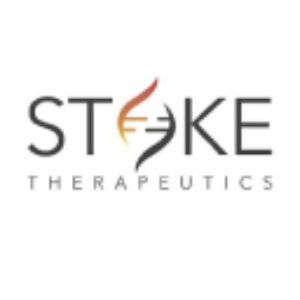Stoke Therapeutics Announces Alignment with Global Regulatory Agencies and Plans to Initiate a Phase 3 Study of Zorevunersen as Potentially the First Disease-Modifying Medicine for the Treatment of Dravet Syndrome
– Alignment achieved with
– One-year study of zorevunersen will evaluate reductions in major motor seizure frequency as well as improvements in behavior and cognition in children and adolescents ages 2 to <18 years old –
– FDA Breakthrough Therapy designation positions zorevunersen on efficient development path; Company plans to start Phase 3 in mid-2025 –
– Webcast and conference call for analysts and investors at 8:00AM Eastern Time today –
Following successful interactions with the FDA, EMA and PMDA, the Company has finalized its EMPEROR Phase 3 study protocol. The proposed study will evaluate two loading doses of 70mg followed by two maintenance doses of 45mg over 52-weeks compared to sham in children and adolescents ages 2 to <18 with Dravet syndrome. The primary endpoint will be reduction in major motor seizure frequency. Key secondary endpoints will include improvements in cognition and behavior as measured primarily by
“Alignment around a global Phase 3 study design for zorevunersen puts us one step closer to our goal of delivering the first disease-modifying medicine for the treatment of Dravet syndrome,” said Edward M. Kaye, M.D., Chief Executive Officer of Stoke Therapeutics. “The level of attention and enthusiasm from clinicians, patient organizations and regulatory authorities for this study
speaks to the shared understanding that current treatments are inadequate. Their support also underscores a belief in the data from our clinical studies that demonstrated substantial and durable reductions in seizure frequency and improvements across multiple measures of cognition and behavior, when treated with a similar dosing regimen. We look forward to continuing to work together with a sense of purpose and urgency as we prepare to initiate the EMPEROR study by mid-year.”
“I have participated as an investigator in many clinical research studies, nearly all of which have been designed to test the next best anti-seizure medicine,” said Dr. Kelly Knupp, M.D., MSCS, Professor of Pediatrics and Neurology at the University of
Zorevunersen was recently granted FDA Breakthrough Therapy Designation, a process designed to expedite the development and review of drugs that are intended to treat a serious condition and preliminary clinical evidence indicates that the drug may demonstrate substantial improvement over available therapy on a clinically-significant endpoint(s).
Clinical Data Support the Phase 3 Dosing Regimen
The Company recently presented data demonstrating that patients treated with two or three doses of 70mg in the Phase 1/2a study and two doses of 45mg in an open-label extension study (OLE), experienced an
Zorevunersen has been generally well tolerated across the studies. To date, more than 600 doses of zorevunersen have been administered to patients across multiple studies, with some patients remaining on treatment for more than three years.
EMPEROR Pivotal Phase 3 Design Summary
The pivotal Phase 3 study will be a global, randomized, double-blind, sham-controlled trial.
Anticipated Enrollment: Approximately 150 patients with Dravet syndrome between the ages of 2 to <18 years of age.
Diagnosis: A confirmed variant in the SCN1A gene not associated with a gain of function.
Primary Endpoint: Percent change from baseline in major motor seizure frequency in patients receiving zorevunersen as compared to sham.
Key Secondary Endpoints: Durability of effect on major motor seizure frequency. Improvements in behavior and cognition as measured by
Additional Endpoints: Safety, Clinician Global Impression of Change (CGI-C), Caregiver Global Impression of Change (CaGI-C), and the Bayley Scales of Infant Development (BSID-IV).
Global Participation: The study will be conducted in the
Duration: 60 weeks (8-week baseline period followed by 52-week treatment period)
Phase 3 Data: Data are anticipated by the end of 2027, pending enrollment and study timelines.
Continuing Treatment: Patients who are eligible will be offered ongoing treatment with zorevunersen as part of an OLE study.
Stoke Webcast and Conference Call for Analysts and Investors
Stoke management will host a webcast and conference call for analysts and investors on Tuesday, January 7, 2025, at 8:00am Eastern Time. The call will focus on the successful alignment with global regulatory agencies related to a Phase 3 study of zorevunersen. The webcast will be available on the Investors & News section of Stoke’s website at https://investor.stoketherapeutics.com/. Research analysts who plan to join the call and participate in the Q&A session may register here to receive the dial-in details and a unique PIN. All other participants are invited to access the listen-only webcast by clicking here. A replay of the webcast will be archived and available for at least 90 days following the event.
About Dravet Syndrome
Dravet syndrome is a severe developmental and epileptic encephalopathy (DEE). Dravet syndrome is difficult to treat and has a poor long-term prognosis. Complications of the disease often contribute to a poor quality of life for patients and their caregivers. Dravet syndrome is characterized by frequent, prolonged and refractory seizures, beginning within the first year of life. Beyond seizures, Dravet syndrome is associated with developmental and cognitive impairments that often include intellectual disability, developmental delays, movement and balance issues, language and speech disturbances, growth defects, sleep abnormalities, disruptions of the autonomic nervous system and mood disorders. Compared with the general epilepsy population, people living with Dravet syndrome have a higher risk of sudden unexpected death in epilepsy, or SUDEP. There are no approved disease-modifying therapies for people living with Dravet syndrome. One in 15,600 babies are born with Dravet syndrome, which is not concentrated in a particular geographic area or ethnic group.
About Zorevunersen
Zorevunersen is an investigational new medicine for the treatment of Dravet syndrome currently being evaluated in ongoing clinical trials. Stoke believes that zorevunersen, a proprietary antisense oligonucleotide (ASO), has the potential to be the first disease-modifying therapy to address the genetic cause of Dravet syndrome. Zorevunersen is designed to upregulate NaV1.1 protein expression by leveraging the non-mutant (wild-type) copy of the SCN1A gene to restore physiological NaV1.1 levels, thereby reducing both occurrence of seizures and significant non-seizure comorbidities. Zorevunersen has been granted orphan drug designation by the FDA and the EMA. The FDA has also granted zorevunersen rare pediatric disease designation and Breakthrough Therapy Designation for the treatment of Dravet syndrome with a confirmed mutation, not associated with gain-of-function, in the SCN1A gene.
About Stoke Therapeutics
Stoke Therapeutics (Nasdaq: STOK), is a biotechnology company dedicated to restoring protein expression by harnessing the body’s potential with RNA medicine. Using Stoke’s proprietary TANGO (Targeted Augmentation of Nuclear Gene Output) approach, Stoke is developing antisense oligonucleotides (ASOs) to selectively restore protein levels. Stoke’s first compound, zorevunersen (STK-001), is in clinical testing for the treatment of Dravet syndrome, a severe and progressive genetic epilepsy. Dravet syndrome is one of many diseases caused by a haploinsufficiency, in which a loss of ~
Cautionary Note Regarding Forward-Looking Statements
This press release contains forward-looking statements within the meaning of the “safe harbor” provisions of the Private Securities Litigation Reform Act of 1995, including, but not limited to: the ability of zorevunersen to treat the underlying causes of Dravet syndrome and reduce seizures or show improvements in behavior and cognition at the indicated dosing levels or at all; the design, timing and results of the Phase 3 clinical trial; and the timing and expected progress of data readouts, regulatory meetings, regulatory decisions and other presentations. Statements including words such as “expect,” “plan,” “will,” “continue,” or “ongoing” and statements in the future tense are forward-looking statements. These forward-looking statements involve risks and uncertainties, as well as assumptions, which, if they prove incorrect or do not fully materialize, could cause our results to differ materially from those expressed or implied by such forward-looking statements, including, but not limited to, risks and uncertainties related to: the Company’s ability to advance, obtain regulatory approval or, and ultimately commercialize its product candidates, including zorevunersen; the timing of data readouts and interim and final results of nonclinical and clinical trials; the receipt and timing of potential regulatory decisions; positive results in a clinical trial may not be replicated in subsequent trials or successes in early state clinical trials may not be predictive of results in later stage trials; the Company’s ability to fund development activities and achieve development goals, including expectations regarding the Company’s collaboration with Acadia Pharmaceuticals; the Company’s ability to protect its intellectual property; the direct or indirect impact of global business, political and macroeconomic conditions, including inflation, interest rate volatility, cybersecurity events, uncertainty with respect to the federal budget, instability in the global banking system, volatile market conditions, and global events, including public health crises and ongoing geopolitical conflicts, such as the conflicts in
View source version on businesswire.com: https://www.businesswire.com/news/home/20250107493873/en/
Stoke Media & Investor Contacts:
Dawn Kalmar
Chief Communications Officer
dkalmar@stoketherapeutics.com
781-303-8302
Doug Snow
Director, Communications & Investor Relations
IR@stoketherapeutics.com
508-642-6485
Source: Stoke Therapeutics








